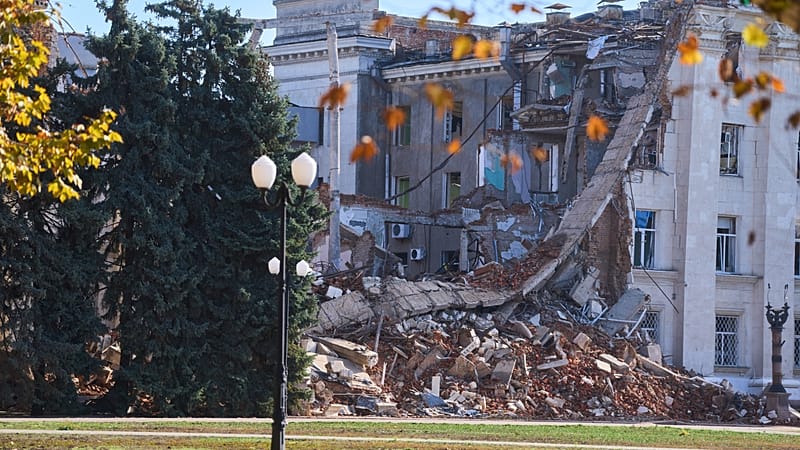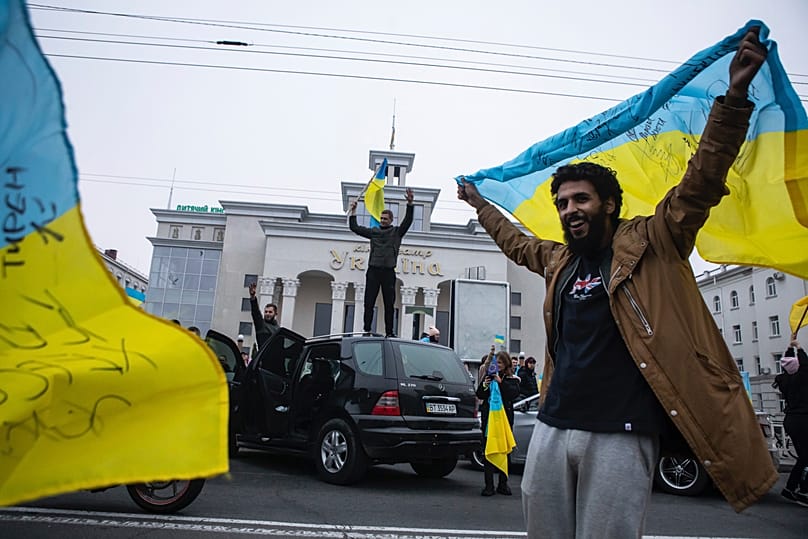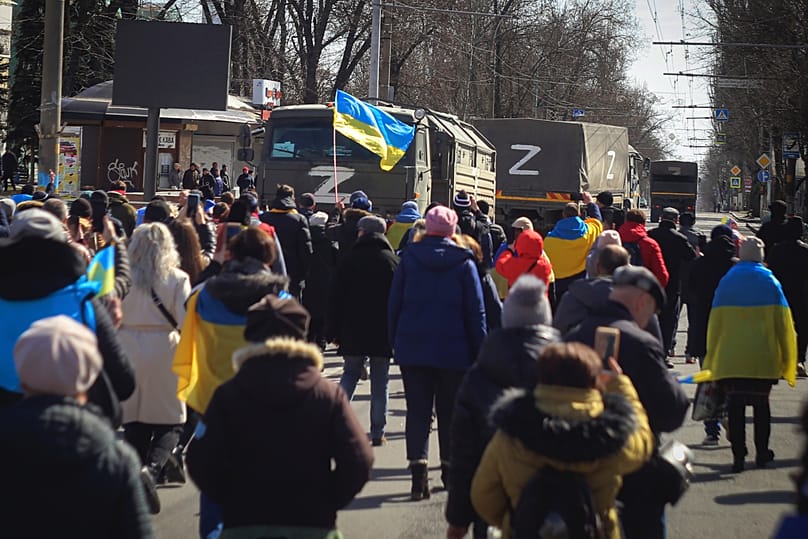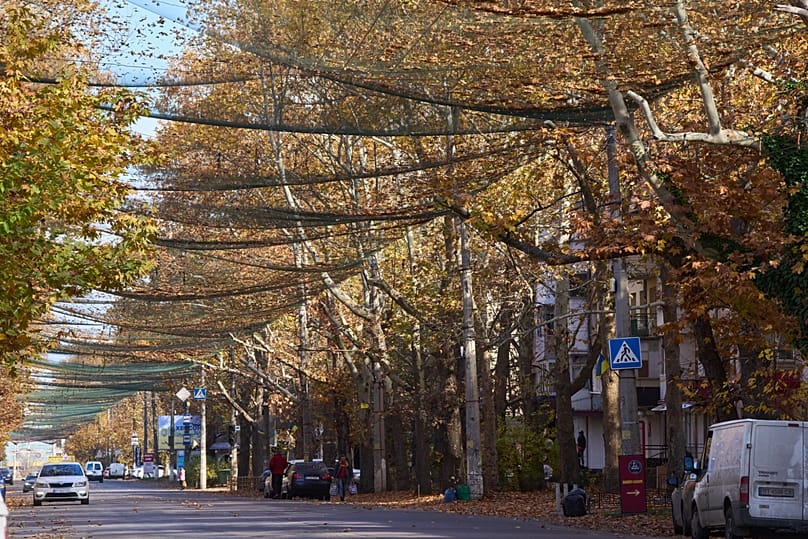Three years since the liberation of Kherson: No Russian troops, but thousands of attack drones

On 11 November 2022, thousands of people poured into the streets and the Kherson main square, waving the blue-and-yellow flags as they greeted Ukrainian soldiers who had liberated the southern city after eight months of Russian occupation.
As local authorities rushed to set up cellphone connections and demining teams continued clearing the area, local residents celebrated that they were finally free.
Wrapped in national Ukrainian flags, they hugged the soldiers, signed and took selfies with Kyiv troops, despite having no water or electricity.
With a pre-war population of nearly 300,000 people, Kherson was the only regional capital occupied by Russia since Moscow’s full-scale invasion.
Kherson residents held large-scale protests in March and April 2022, demanding that Russian troops leave the city.
Ukrainian troops pushed Moscow troops out of the city, but not the whole of the Kherson region. Three years since the liberation of Kherson, people here are free, but they live under constant danger.
Living under constant drone attacks
The Kherson region is still partially occupied by Russian forces on the left bank of the Dnipro River.
Kherson city — on the opposite bank of the river — is constantly targeted by Russian forces due to its proximity to the occupied area and therefore limitations of Ukrainian air defences.
Moscow troops strike it with regular intensity — and drones now prowl the skies above a city of broken windows and empty courtyards.
Russian drone attacks on Kherson city have become so frequent that the residents describe Moscow’s strategy of constant attacks on civilians as "human safari".
To protect the people and civilian infrastructure, major roads leading into the centre of Kherson are covered in improvised nets.
US actress Angelina Jolie recently visited Kherson, meeting medical staff, families and volunteers in one of the most dangerous regions in Ukraine.
Sharing her impressions on Instagram, Jolie said, “The threat of drones was a constant, heavy presence. You hear a low hum in the sky.”
“It’s become known locally as a ‘human safari’, with drones used to track, hunt and terrorize people, constantly. There was a moment when we had to pause and wait while a drone flew overhead."
"I was in protective gear, and for me, it was just a couple of days. The families here live with this every single day,” the actress wrote.
Jolie said people shared stories with her about the psychological toll of living under constant threat and the fear of being forgotten by the world.
“They’ve moved their schools, clinics and daycare into reinforced basements, determined that life will go on. It was hard but inspiring to witness,” she added.
Visiting Kherson on the third anniversary of its liberation, Ukrainian President Volodymyr Zelenskyy said local hospitals are daily saving people injured in Russian drone and artillery attacks.
“Eleven facilities already have underground hospitals. This is important when lives are being saved even as the enemy tries to take them away.”
Ukraine’s president said today’s most important goal for the authorities is to strengthen the defences of Kherson.
“Thousands of Russian drone strikes target this city every month – in fact, such a threat is constant.”
Kyiv is trying to strengthen Kherson’s air defence with anti-drone strategies and unmanned systems until Russian troops remain across the Dnipro from the once-vibrant southern city.
Hoy




